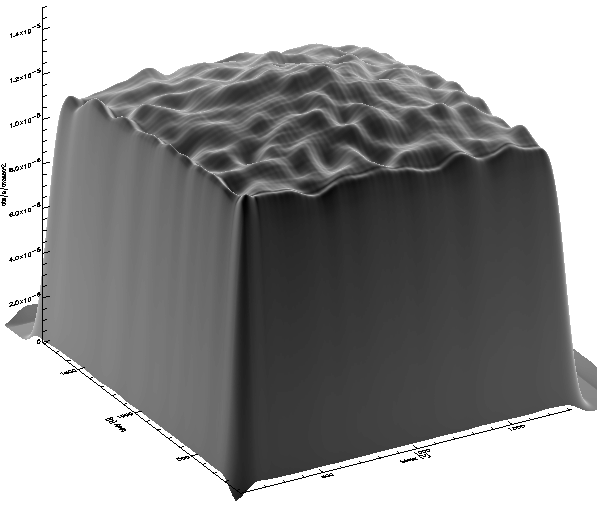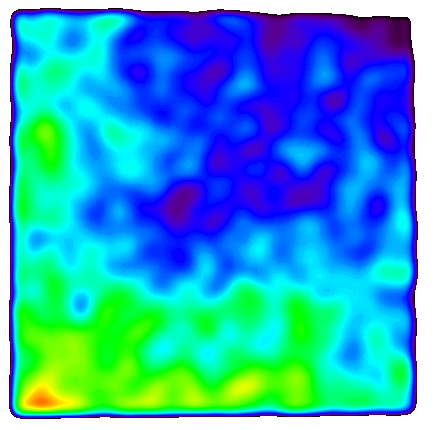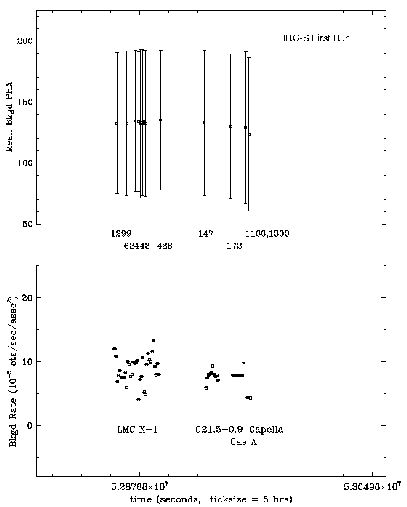


|

|
The status of each is as follows:
The quiescent rate is approximately 1.5E-5 counts/sec/arcsec**2, although there are regular excursions to rates 3-4 times higher than this. There is some correlation with the soft electron monitor in the EPHIN detector, it is however not one-to-one.
The data samples the entire MCP, with exclusions for obvious sources within the field. Approximately 40% of the background counts are directly removable based upon the characteristics of the amplitudes recorded in the three taps for each axis. This leaves a background count rate for the HRC-I of 9E-6 counts/sec/arcsec**2.
Also shown is the mean PHA and sigma of the distribution of mean PHA's. This distribution includes the above mentioned filterable background events, many of which lie in channel 255. NB: simply discarding events where the PHA=255 will not remove all of these events and is likely to discard source events.
Please note that this data was taken before the adjustment of the High
Voltage which occurred on late September/early October 1999.
We present three different views of these results: a 3-D projection of the count rate in absolute units, a relative contour plot of the count rate, and a percentage deviation from the mean.
| Absolute Range | Counts | Percent Difference |
|---|---|---|

Unfiltered |

Unfiltered |

Unfiltered |

Filtered |

Filtered |

Filtered |
Caveats
For Chandra users who wish to custom filter their data, we have compiled an event list containing the sum of all 17 observations used above. The event list has been filtered using the IPI software to flag all questionable events, but those events have not been removed from the list. A user can therefore filter the list as appropriate, bin it by 8 on both axes, and then divide the resulting image by our exposure map (also below).
To download, hold down the shift key and click on the links below.
| Background Events List
(GZipped FITS format) |
Exposure Map Image
(GZipped FITS format) |

In this case the "quiescent" partially filtered rate appears to be at
least as high as the highest unfiltered rates for the I. The average
rate, after partial filtering, is around 7.5E-5 counts/sec/arcsec**2, or
nearly an order of magnitude greater than the I. This differential is due
to the lack of a fully functional anti-coincidence shield on the S detector.
Contact CXC Calibration
(cxccal@cfa.harvard.edu) for further information
Last modified:09/27/12
 |
The Chandra X-Ray
Center (CXC) is operated for NASA by the Smithsonian Astrophysical Observatory. 60 Garden Street, Cambridge, MA 02138 USA. Email: cxcweb@head.cfa.harvard.edu Smithsonian Institution, Copyright © 1998-2004. All rights reserved. |